09 August, 2024
windows
Modern uPVC windows, as well as those manufactured from other materials, improve our quality of life by offering innovative features and providing more light. However, the question arises: how do modern window solutions affect the functionality and appearance of a home? Let's try to answer it.
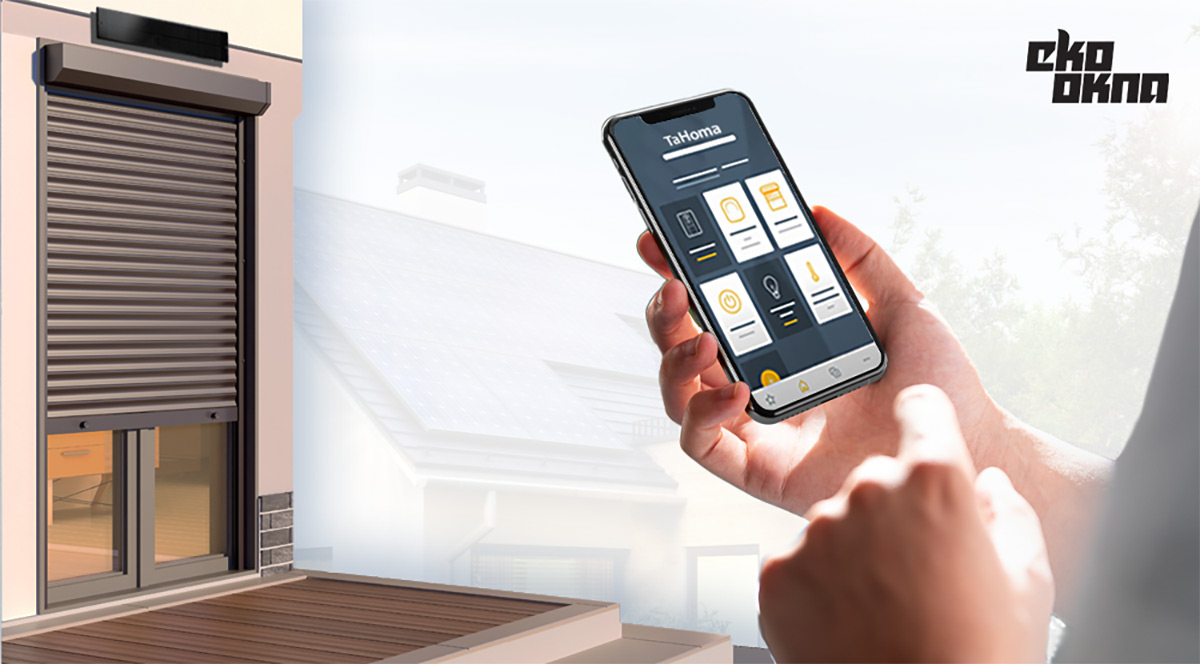
Windows in a modern home are like the traditional solutions found, for example, in historic tenement houses.
Contemporary window solutions are based on extremely technologically advanced materials, even if they seem to be just ordinary wood. No, nowadays it will not be ordinary. In the past, it used to be a raw board and might not even have had a glass pane, because not many people could afford such a luxury. A window might even have been just a hole in the wall protected by shutters. In warm climates, instead of a shutter, there may have been a blind, but not likely in central Europe.
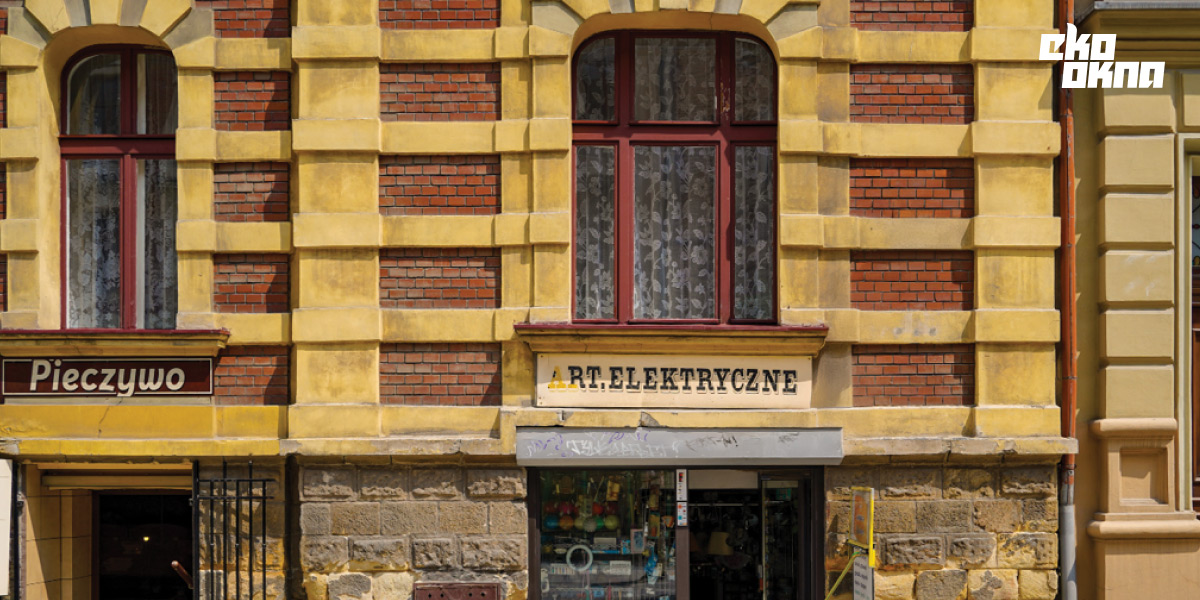
While talking about windows, we must remember to measure time by the hands of the clock, but also by the wealth of our wallets. The beautiful steel windows with enormous glazing of the industrial age were considerably pricey and simultaneously cold, requiring huge investments in heating for the buildings. The windows were effectively becoming even more expensive. They naturally found their way only into the buildings of the rich.
At the same time, however, glazed wooden windows were becoming widespread, which were neither airtight nor durable, they didn’t even insulate well but already resembled modern solutions.
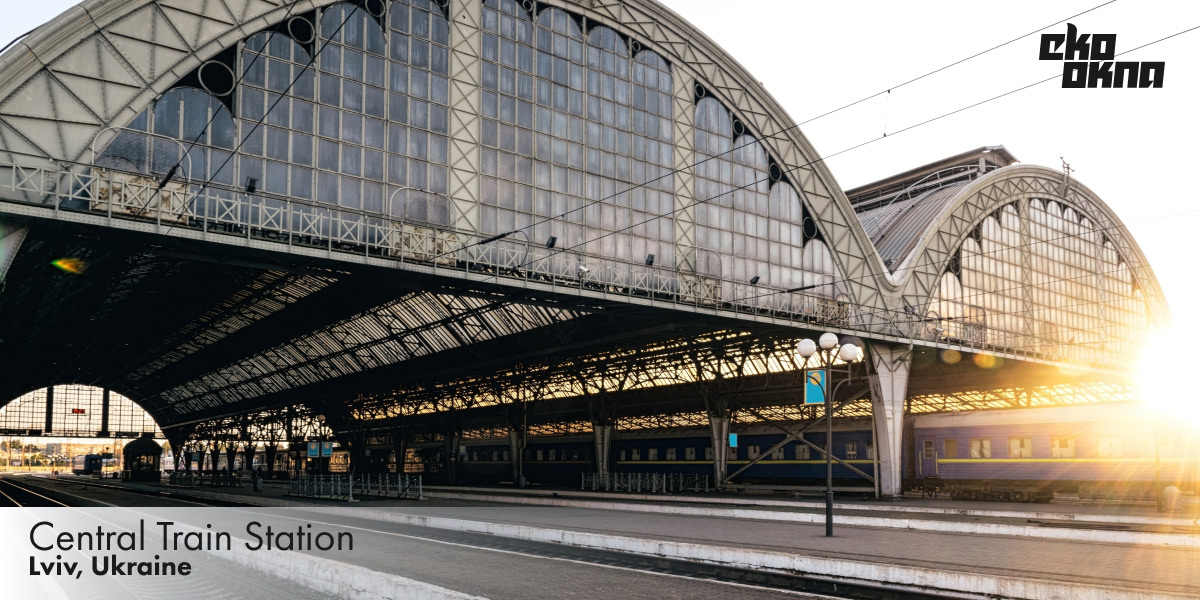
When we buy modern windows for our home, in addition to a nice appearance, we also expect:
Home designs with large windows are not unusual and do not require a choice between providing light or heat. Nowadays, a window can have it all, thanks to appropriately advanced technologies, allowing us to have our cake and eat it.
Currently, windows for a bungalow or windows in a single-family house in general are always energy-efficient windows. The key is to keep the heat in, i.e. the thermal transmittance of the window as low as possible. It tells us how much energy passes through the window per square metre of its surface area.
The number one goal is always to ensure that this value does not exceed 1,0 W/m²K [U-value of 0.18 BTU/(h⋅ft²⋅°F)], which is considered to be an energy-efficient window, and preferably 0,85 W/m²K [U-value of 0.15 BTU/(h⋅ft²⋅°F)] when we can already talk about passive windows.

The most important innovation that allows for the creation of solutions effectively blocking the escape of thermal energy from the building is insulated glazing units, also known as glazing units. The energy efficiency of passive windows is achieved primarily by installing appropriate glazing in them.
A traditional single glass pane is primarily used indoors today. If the glazing is meant to protect against heat loss, it must consist of at least two glass panes separated by a thermal chamber filled with gas. This creates the basic single-chamber glazing unit.
The best choice for most investments is a package consisting of three sheets of glass, two of which are coated with special heat-reflective coatings. The spacers creating the chambers between them are so-called warm spacers, characterised by negligible thermal transmittance. The gas between them is not ordinary air, but argon or krypton. Older types of aluminium spacers are mainly used in windows with poorer parameters.
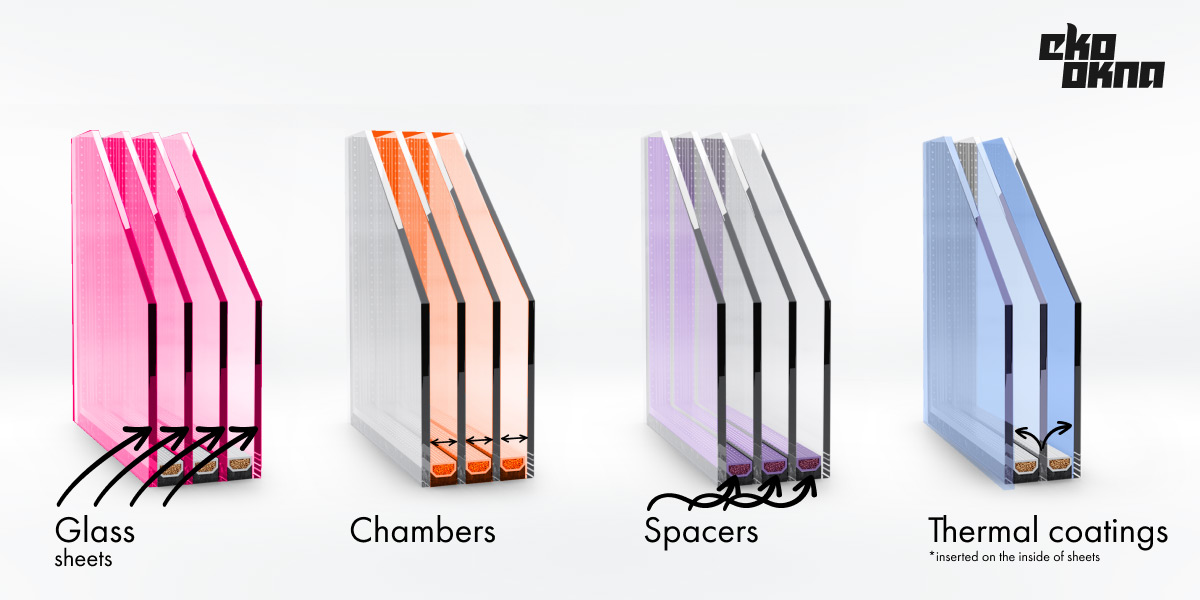
In summary, a modern glazing unit consists of:
The double chambered package can easily achieve a Ug of 0.5 W/m²K [U-value of 0.9 BTU/(h⋅ft²⋅°F)].
Currently, the four most popular types of windows on the market are:
Polyvinyl chloride, known as "plastic" in uPVC windows, is a synthetic material that has started a real revolution. It allowed for the creation of gas-filled chambers in profiles. Gas is a much better thermal insulator than any solid material. In practice, insulating materials often have a chamber structure, resembling a sponge with open or closed chambers.
The natural thermal insulation of wood also comes from the fact that on a cellular level, it is a collection of micro-cells filled with air surrounded by cellulose cell walls.
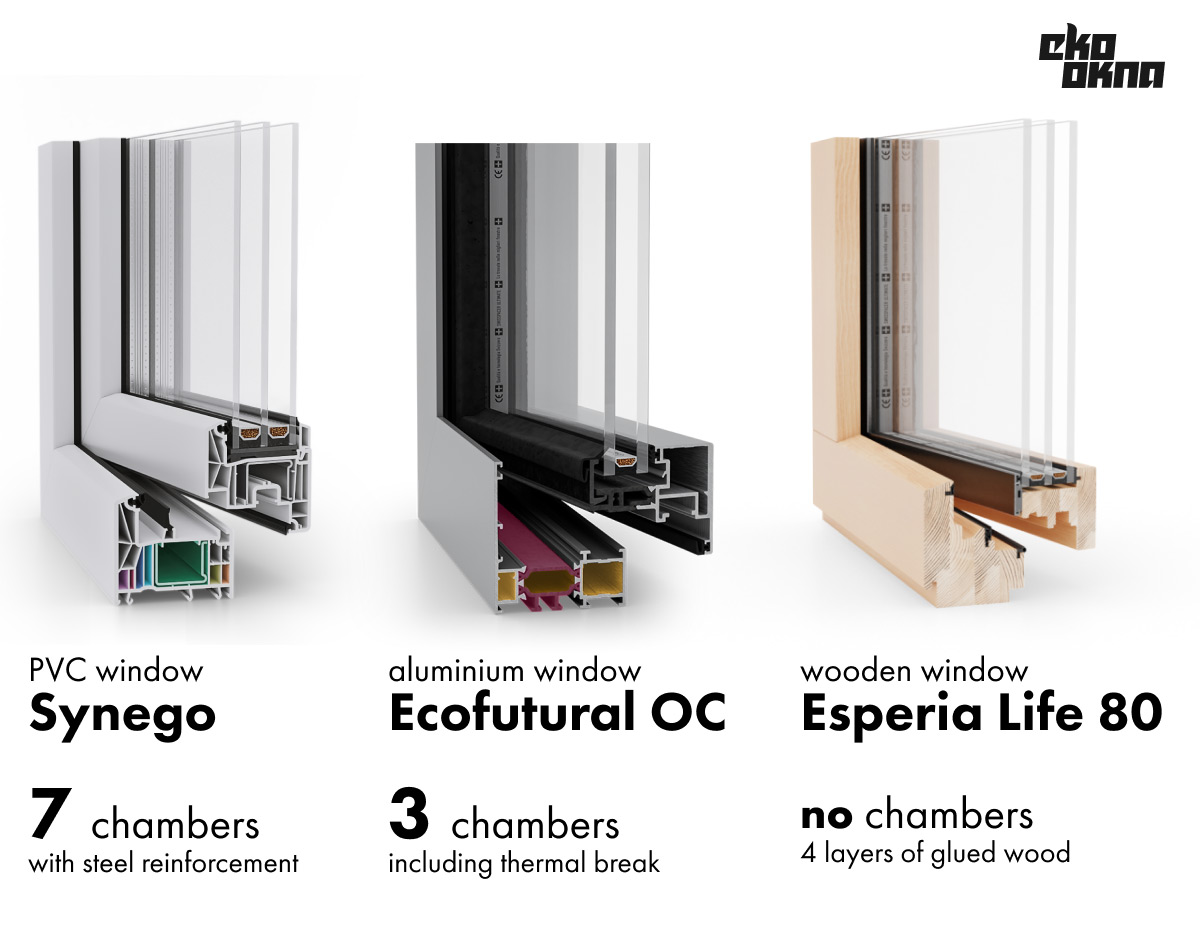
How many chambers do typical thermal windows have?
How can aluminium and steel have fewer chambers even though they conduct heat much better? They use a different solution: a thermal break.
Even a mass of metal chambers would not help. Therefore, the typical approach is to use insulating material inside profiles. Although it's less durable than metal, it doesn't conduct heat as well. Additionally, the chambers can be filled with another additional insulating material.
Windows are a large and increasingly significant part of every façade. They are also increasingly found in combination with fixed glazing and fixed windows, sliding systems, large patio doors and glazed traditional doors. All this means that the aesthetics of the building are becoming lighter and the interior more effectively illuminated.
The use of modern windows also means completely new possibilities, for example:
For homes with large windows, we can choose any window made of the most suitable material. The finishing options should allow us to achieve almost any effect, excluding extreme cases.
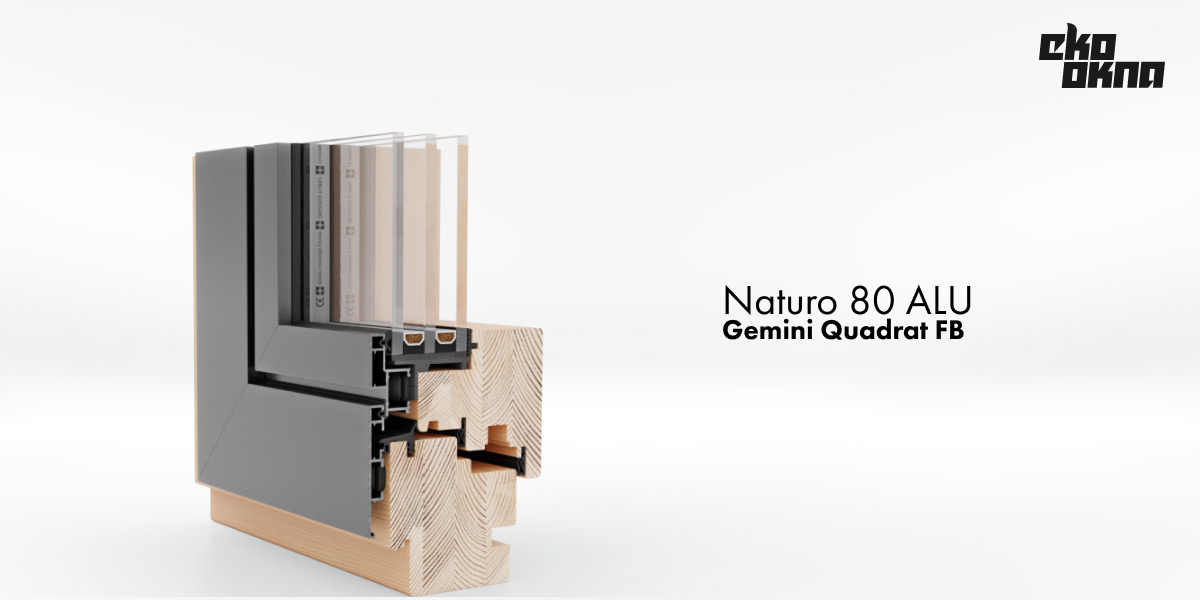
We cover PVC windows with a wood-effect veneer, giving them the appearance of oak. Do you like traditional and ecological wood inside, but want to have modern, flush metal windows on the outside? Just apply aluminium overlays to create wooden-aluminium windows.
The use of modern materials or at least their modern forms, gives us many possibilities. Architectural trends demand large and unusual windows. This requires good statistics of window profiles. It is achieved by:
Once we have durable profiles, we can create:
When it comes to the shape and dimensions of windows, today the only limit is imagination and, of course, the size of a wallet. However, with the development of technology, it is becoming less of a barrier. The same applies to their finishing.
There is also a fly in the ointment. Usually, users may not pay much attention to this, but in warm window systems, the installation depth increases.
In simple terms, the installation depth is the thickness of the entire window. The greater it is, the more massive the window and the opening in the wall are more strongly partitioned.
Usually, a much more serious problem is the new insulation in old buildings. Its thickness causes the windows to become tunnels, which combined with thick glazing significantly reduces the amount of light entering the interior. It is important to remember that as the thickness of glazing increases, the light transmittance through the window decreases. You may feel fenced off from our surroundings.
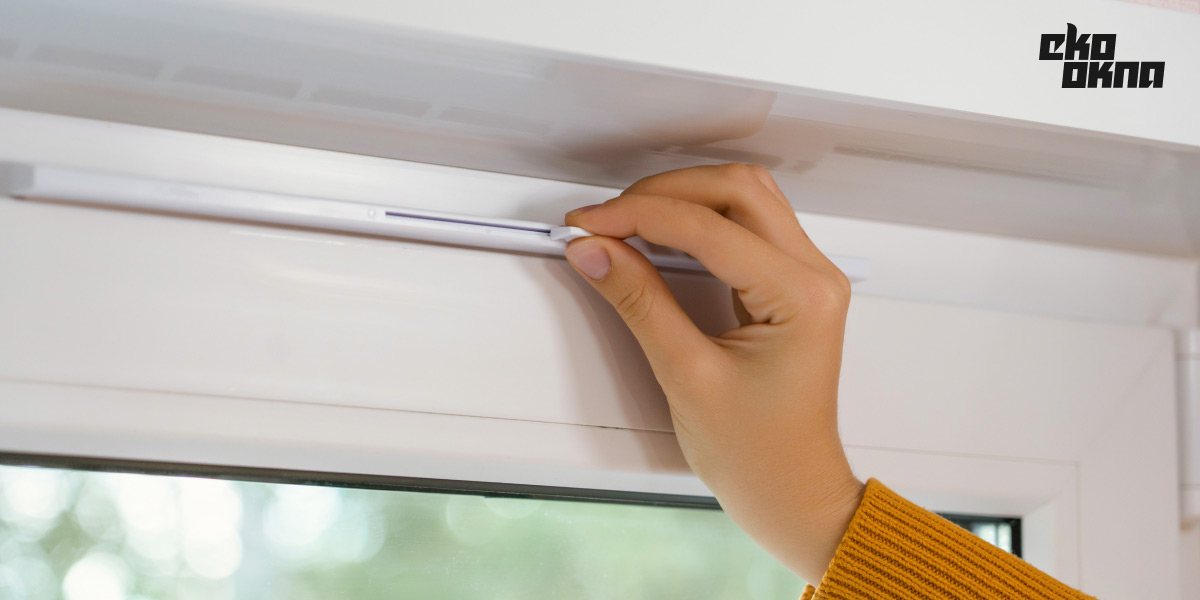
Paradoxically, too good insulation with new windows may also be a problem, and high tightness will cause insufficient air exchange. The result will be dampening of the interior, which can be dealt with quite easily by better mechanical ventilation or by installing vents in windows.
Window comfort today includes an element that until recently no one ever noticed. This element is the acoustics in the windows, that is their ability to dull the noise coming from outside.
Also read: Acoustic insulation of windows; what determines it?
In short, the Rw value, expressed in decibels, is a parameter that indicates a window's ability to reduce noise from outside. If the Rw value is 30 dB, a 70 dB noise will reverberate in the interior with a sound wave amplitude of 40 dB. This is still quite a lot, but it may not always be enough. Fortunately, there are many ways to improve the sound insulation of a window. Our range of solutions includes:
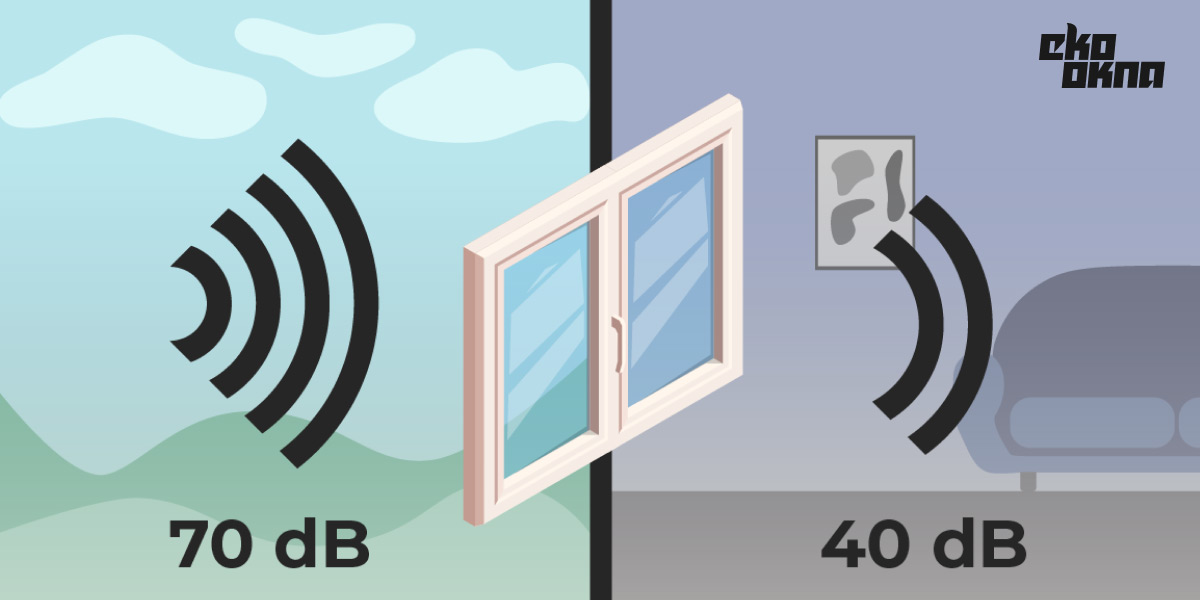
Usually, thermal insulation is a priority, but fortunately, this goes hand in hand with acoustic insulation. Thicker, warmer glazing is also better at sound insulation. In the case of increased or unusual noise, you can resort to tricks such as glass formats of different thicknesses.
Finally, it is essential to remember that the quality of the gaskets and installation also translates into a viable Rw parameter.
Large windows in old homes caused coldness inside because of the heat escaping through them. At the same time, large glazings in modern buildings can cause overheating of rooms in summer. They let in a lot of light and heat, but not much escapes.
There are two basic solutions here:
Solar control glass allows reflecting part of the sunlight or absorbing it before it reaches the interior. This means that the rooms won’t heat up.
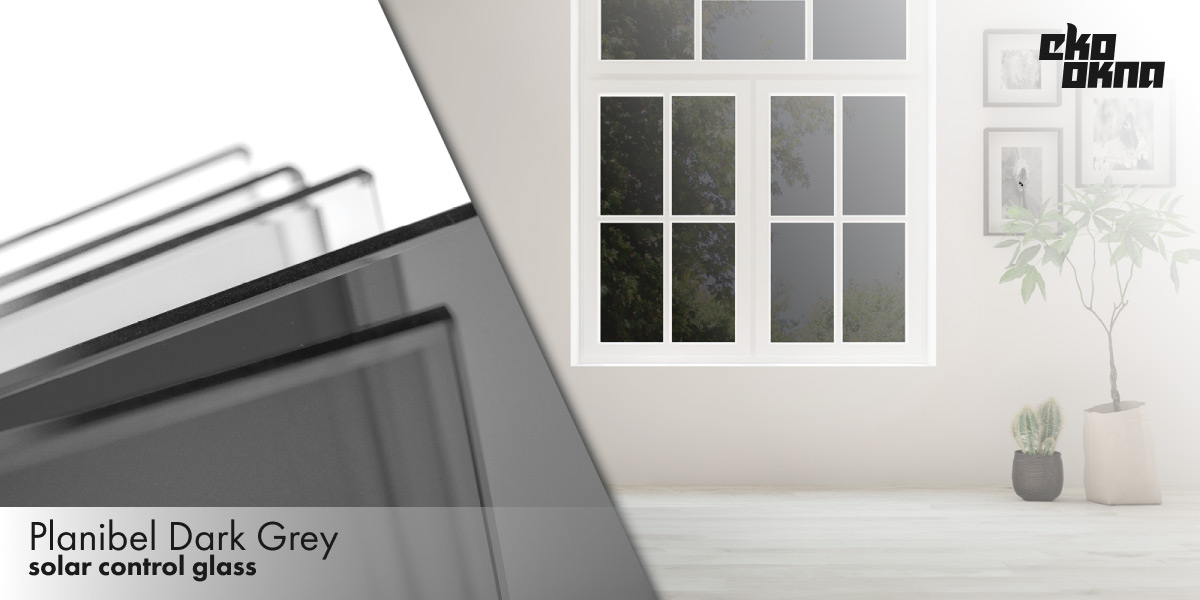
Window covers physically block the light from entering the window or the interior itself. The choice is wide:
Depending on the construction and the options chosen for each of these solutions, light can be diffused, block part of it, or completely darken the interior. Their effectiveness varies greatly, and before choosing a specific option, one should specify their expectations.
The Internet of Things is currently one of the most fashionable trends in the broader design and construction industry. The functions and parameters of windows and their entire ecosystem are more often designed to work autonomously, offering greater comfort for the entire home. It is already difficult to design a dream home today that does not include at least basic smart features.
Smart windows are nothing new. For a long time now, there have been multifunctional glass panes, one of whose functions is burglary detection. Traditional solutions are based, among others, on wires embedded in the glass, which are broken when the glass is broken and trigger an alarm. More modern options use sensors that detect the position of the window and vibrations associated with an attempt to force it open. These sensors can be placed on the window frame or concealed within their fittings. A good example of this is IntelliTAG™ air io, which, in a set with the entire Somfy ecosystem, can do much more than just inform about the alarm.
Modern trends in window joinery call for the combination of windows and their covers into coherent smart systems. This offers many possibilities for fully autonomous automation based on scenarios.
Situation 1
Event:
The room is too warm
Response:
The Smart Home control panel sends a signal and the drive lowers the roller shutters.
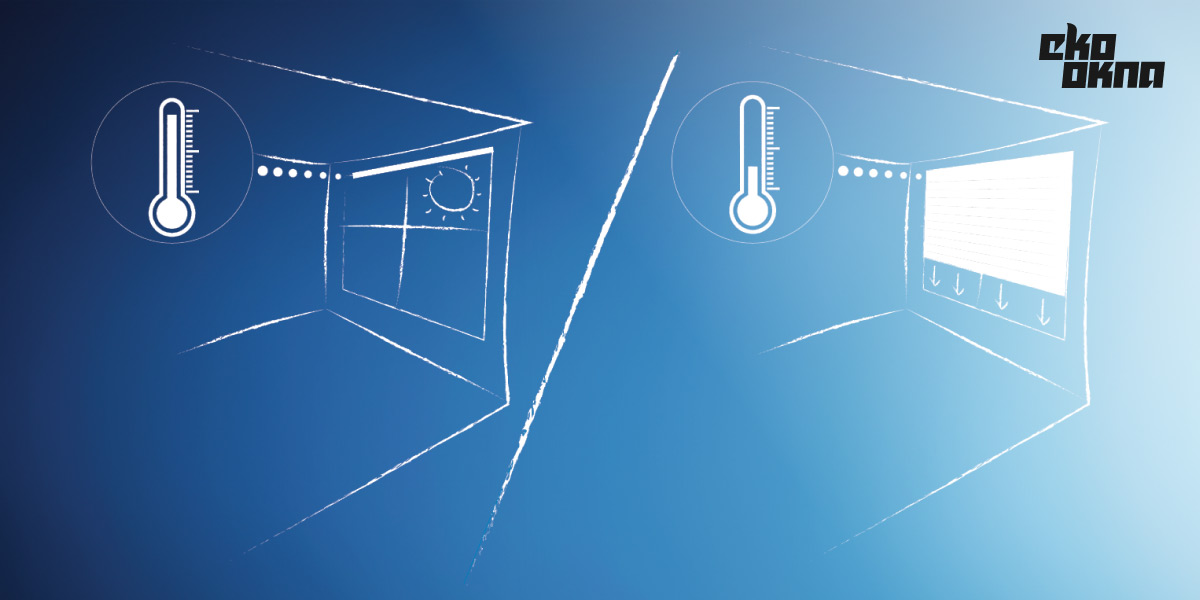
Situation 2
Event:
There is too much carbon dioxide in the air
Response:
The window is tilted using the motor controlled by the Smart Home control unit.
Situation 3
Event:
Householders leave for work and school at 7.30 am, and the windows are left open.
Response:
The sensors send an alert to the household members or close the windows themselves.
Situation 4
Event:
The burglar attempts to force open the window
Response:
Smart Home lowers the roller shutter and sends an alert to the user or the relevant service (requires an anti-burglary service)
Situation 5
Event:
It is 6:00 a.m. and time to get out of bed.
Response:
The window covers go up and selected windows are opened.
Windows can do much more.Even today, variable-transparency glass, such as the product from Digi Glass Factory, is often found in offices. After pressing a button, the glass becomes milky, and nothing can be seen through it. Then it becomes completely transparent again. More modern solutions make it possible to create full-fledged screens for displaying content. Such windows can even power themselves thanks to built-in solar panels. However, this is still a distant future for most people.
At the beginning of the XXI century, it was believed that within a maximum of two decades, all new buildings would meet the requirements of passive construction. The idea was that they would acquire all the energy needed for heating solely from the sun and ordinary human activity within them. A necessary condition for achieving this goal is to use windows with an appropriate design.
The vision proved too ambitious, and currently, the law does not set such demanding goals for investors. Nevertheless, evolving regulations are forcing ever more extensive changes to joinery.
This happens in two ways:
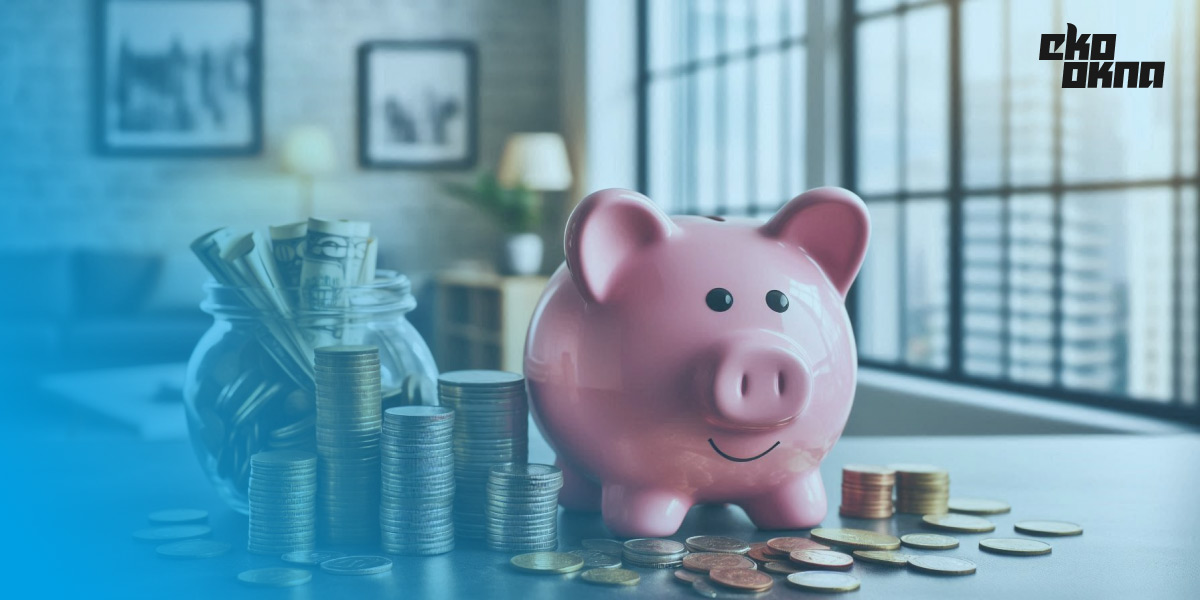
The first of these mechanisms is as straightforward as it is effective. Year after year, building regulations require that windows replaced in older buildings and installed in new ones meet increasingly stringent acoustic and thermal performance standards. Investors are obliged to use solutions that are no worse than those specified in the relevant regulations.
Investment incentives refer to programs from which the investor can expect to receive a return on investment in case of using products with sufficiently high parameters This most often applies to renovation projects.
It seems that in many respects we have already achieved so much that window design will focus mainly on aesthetic aspects. It is true, but not entirely, because it is always possible to improve the durability and aesthetics of any product.
Regardless of this, several issues are waiting for innovations, even if today's state often seems satisfactory. These are:
The easiest way to improve window parameters is to increase their installation depth, using quadruple pane units and preferably placing additional overlays. While this approach yields excellent results, it comes with associated financial costs and visual compromises. The same applies to window acoustics.
Therefore, it is necessary to look for solutions that will allow for better performance without increasing the size and adding more elements. Among such innovations developed so far, we can mention:

This is also crucial for the thermal performance and transparency of the windows.
Accumulation of glass and special coatings causes a decrease in window parameters indicating how much light and heat they can let into the interior. A very well-insulating quadruple pane unit with thermal coatings will be very dark and will not let in too much light, and no one will want to stay in perpetual twilight. Such protection against overheating would hardly satisfy anyone.
In the window joinery market, innovation follows innovation. The whole point of it is that many of them, while promoting one aspect of a window, affect its other features. Warmer windows with a large installation depth and massive profiles may not be as aesthetically exciting as the investor would like. On the other hand, slender forms and precipitous glazing of steel systems do not offer thermal performance or insulation.
Every investment becomes a search for the golden mean. It is worth relying on expert distributors who are well acquainted with all the systems on the market and their possibilities. In turn, distributors should use extensive knowledge platforms that offer detailed technical information on products and teach how to optimally use them.
In the coming years, the window joinery market should offer many exciting aesthetic toptions, even better performance, and ever-increasing integration with Smart Home systems. It is already worth reaching out to discover astonishing technological marvels that can later be expanded with further possibilities.

Hotline: +48 32 459 15 00 Connection fee in accordance with the operator`s price list.
E-mail: quoteuk@ekookna.com newclientuk@ekookna.com Contact for business customers only.
Eko-Okna S.A.
Kornice, ul. Spacerowa 4
47-480 Pietrowice Wielkie
NIP: 6391813241
KRS: 0000586067